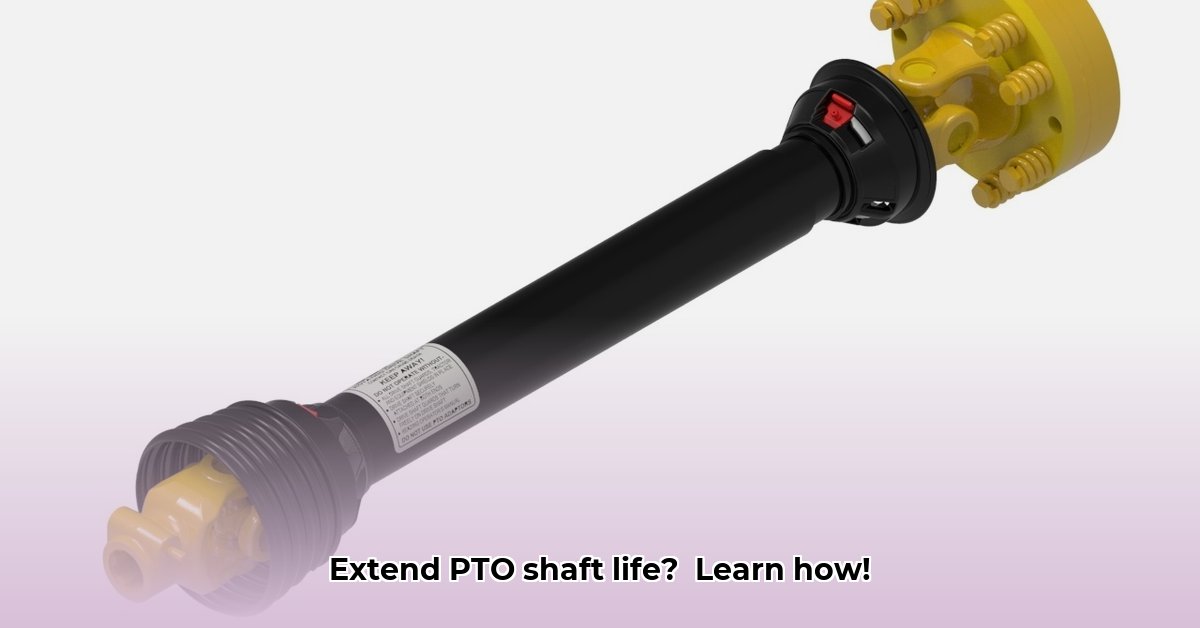
Understanding PTO Shafts and Slip Clutches: A Farmer's Guide
A smoothly functioning PTO (Power Take-Off) shaft is crucial for efficient farming. It's the vital link transferring power from your tractor's engine to implements like mowers, balers, and tillers. However, unexpected shocks or overloads can cause significant damage. This is where slip clutches step in as crucial protectors. They act as a safety mechanism, preventing damage to both your expensive tractor and your implements. Think of it as a built-in shock absorber for your power transfer system. A well-chosen and maintained slip clutch translates directly to less downtime and higher productivity. For more in-depth information, check out this helpful resource on PTO shafts: PTO Shaft Info.
Types of Slip Clutches: Friction vs. Centrifugal
Tractor Supply, and other retailers, offer various slip clutches. The two most common types are friction clutches and centrifugal clutches.
Friction Clutches: These are generally simpler and more affordable. They rely on friction between surfaces to control power transfer. Imagine it like two slightly rough surfaces pressed together; the friction prevents slippage. While simpler, they might wear out faster under heavy or continuous use.
Centrifugal Clutches: These are more sophisticated, engaging only when the PTO shaft reaches a certain speed. This makes them ideal for implements needing precise speed control. Their more complex design often leads to higher initial costs but can provide increased longevity and more precise control.
Choosing between these types depends on your specific needs and budget. The right clutch is one that balances initial cost, durability, and operational requirements. Did you know that improved designs incorporating sustainable materials are emerging as a future trend?
Choosing the Right Slip Clutch: A Step-by-Step Approach
Selecting the correct slip clutch isn't just about finding a fit; it's about ensuring your equipment's longevity and operational efficiency. Follow these steps:
Assess Implement Needs: Determine the horsepower (hp) and torque requirements of the implement you'll be using. This information is usually found in the implement's owner's manual. A small mower's needs differ greatly from a large hay baler.
Analyze Workload: Consider the intensity and frequency of use. Heavy, continuous use necessitates a more robust clutch than occasional light use. Will your equipment face consistent high-torque situations?
Define Your Budget: While a more expensive clutch might initially seem costly, a cheaper clutch that fails frequently will cost far more in the long run through repairs and lost work time. A long-lasting clutch saves money in the long run.
Research and Compare: Explore the available options at Tractor Supply and other sources. Consider warranties and read customer reviews. Don't be afraid to ask questions about clutch performance! Have you considered the environmental impact of your choice?
Expert Consultation: Discuss your choices with a knowledgeable mechanic or agricultural equipment professional. They can provide invaluable insights based on experience and your specific needs. This step can save you from costly mistakes.
Eco-Friendly Considerations: Research slip clutches made from recycled materials or designed for improved efficiency to reduce your environmental impact and fuel consumption.
Installation and Maintenance: Maximizing Clutch Lifespan
Proper installation is paramount. Always meticulously follow the manufacturer's instructions. Skipping steps can lead to premature wear or even failure. This could mean costly repairs. Regular maintenance is also essential.
Visual Inspections: Regularly inspect the shaft and clutch for cracks, damage, or excessive wear. Addressing minor issues early prevents major problems later.
Lubrication: Maintain proper lubrication to reduce friction and wear, making sure to use the correct lubricant recommended by the manufacturer.
Alignment: Ensure proper alignment to prevent uneven wear and stress. Misalignment can quickly lead to problems.
Torque Settings: If adjusting the clutch yourself, carefully follow the manufacturer's torque specifications. This prevents damage from either over-tightening or under-tightening.
Proactive maintenance significantly extends clutch lifespan. Is it worth the extra effort considering the cost of replacement?
Troubleshooting Common Issues: Identifying and Solving Problems
Even with proper care, problems can arise. Here's a quick guide:
| Problem | Possible Causes | Solutions |
|---|---|---|
| Clutch Slipping | Worn friction materials, improper adjustment | Replace worn parts, adjust clutch settings per manufacturer's specs |
| Clutch Not Engaging | Improper alignment, linkage problems, low lube | Check alignment, repair linkages, add correct lubrication |
| Excessive Noise | Worn bearings, misalignment | Inspect and replace worn components, correct misalignment |
| Sudden Clutch Failure | Overload, mechanical damage | Investigate the overload cause, repair or replace components |
Remember safety first! If unsure about any repair, consult a qualified mechanic.
Future Trends and Sustainability: The Next Generation of Clutches
The agricultural landscape is evolving towards sustainability. Expect to see:
- Enhanced Durability: New materials and designs leading to longer-lasting clutches.
- Sustainable Materials: Greater use of recycled and environmentally friendly materials.
- Smart Technology: Incorporation of sensors and diagnostics for improved predictive maintenance.
- Increased Efficiency: Designs optimized to reduce fuel consumption.
These advancements will help minimize your environmental footprint while enhancing operational efficiency. Stay informed and adapt to the latest technological developments.
Conclusion: Protecting Your Investment and the Environment
Selecting and maintaining the right slip clutch is essential for both equipment longevity and sustainable farming practices. By following this guide, you can minimize downtime, protect your investment, and contribute to a more environmentally responsible approach to agriculture.